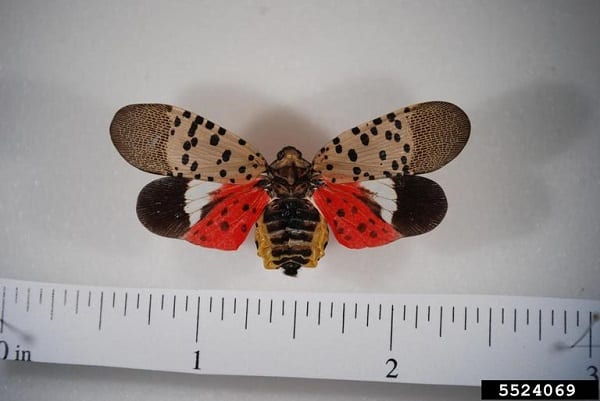UPDATE: The spotted lanternfly quarantine has now been expanded to include Baltimore County.
Original story below…
——
ANNAPOLIS, MD—The Maryland Department of Agriculture on Thursday confirmed the first spotted lanternfly hatch of 2020. The first instar nymph of the season was reported by a department employee while surveying for the pest in the upper northeast corner of Cecil County near the Pennsylvania border.
“Our department continues to work closely with our federal and state partners to survey and prepare for the emergence of this invasive pest in our state,” said Secretary Joe Bartenfelder. “As spotted lanternfly nymphs start to hatch, I encourage all Marylanders to keep a lookout for this insect that has the potential to devastate many of our farmers’ crops.”
The spotted lanternfly poses a major threat to the region’s agricultural industries as it feeds on over 70 different types of plants and crops — including grapes, hops, apples, peaches, oak, pine, and many others. As a known hitchhiker, the spotted lanternfly has confirmed populations in neighboring states, Pennsylvania, Delaware, Virginia, West Virginia, and New Jersey. In Maryland, spotted lanternfly hatching has begun and will last through mid-July. Marylanders should stay vigilant for spotted lanternfly, which, in its current life stage, appear as tiny white-spotted angular black nymphs about a quarter-inch in size.
Following the department’s 2019 survey season, Maryland was found to have established populations of spotted lanternfly in Cecil and Harford counties. In fall of last year, the department’s Plant Protection and Weed Management Program partnered with the U.S. Department of Agriculture (USDA) to treat Ailanthus altissima, the spotted lanternfly’s preferred host, at multiple sites in Cecil and Harford counties. Treatment will begin again in late May or early June. The department’s Plant Protection and Weed Management Program continues to work with the USDA Animal and Plant Health Inspection Service (APHIS) Plant Protection and Quarantine (PPQ) program, University of Maryland Extension, and others to monitor for the insect in Maryland.
A quarantine zone has been in effect for Cecil and Harford counties since October 2019 in an effort to control the spread of this invasive insect to other parts of the state. All spotted lanternfly permits for Virginia, Pennsylvania, New Jersey, and Delaware are transferable and valid throughout the region — meaning a permit from any of these states can be used in Maryland.
Businesses that require the movement of any regulated item within or from the quarantine zone must have a permit. A Maryland permit can be obtained by taking a free online training course through PennState Extension. Upon completion of the course and an online exam, individuals will receive a permit. Managers, supervisors, or employees of businesses operating in the quarantine zone must receive the approved training and pass the exam by at least 70% to demonstrate a working knowledge and understanding of the pest and quarantine requirements. Training of other employees, inspection of vehicles and products, and removal of living stages of spotted lanternfly must also be completed.
Those living within the quarantine zone are encouraged to be vigilant in containing the spread of spotted lanternfly. The department has created a residential compliance checklist that is available for download on its website and will educate residents on the life cycle of the spotted lanternfly and areas to inspect around the home.
If you suspect you have found a spotted lanternfly or their egg masses, snap a picture of it and then smash it. Report the sighting with photo attachments and location information to the Maryland Department of Agriculture at [email protected]. Dead samples of spotted lanternfly from any life stage can be sent to the Maryland Department of Agriculture’s Plant Protection and Weed Management Program at 50 Harry S. Truman Parkway, Annapolis, MD 21401.
More information about the spotted lanternfly can be found on the department’s website. For questions related to the quarantine, permitting, or treatment, contact that Plant Protection and Weed Management Program at 410-841-5920.
Click to access SLFHomeownerChecklistMDA.pdf


